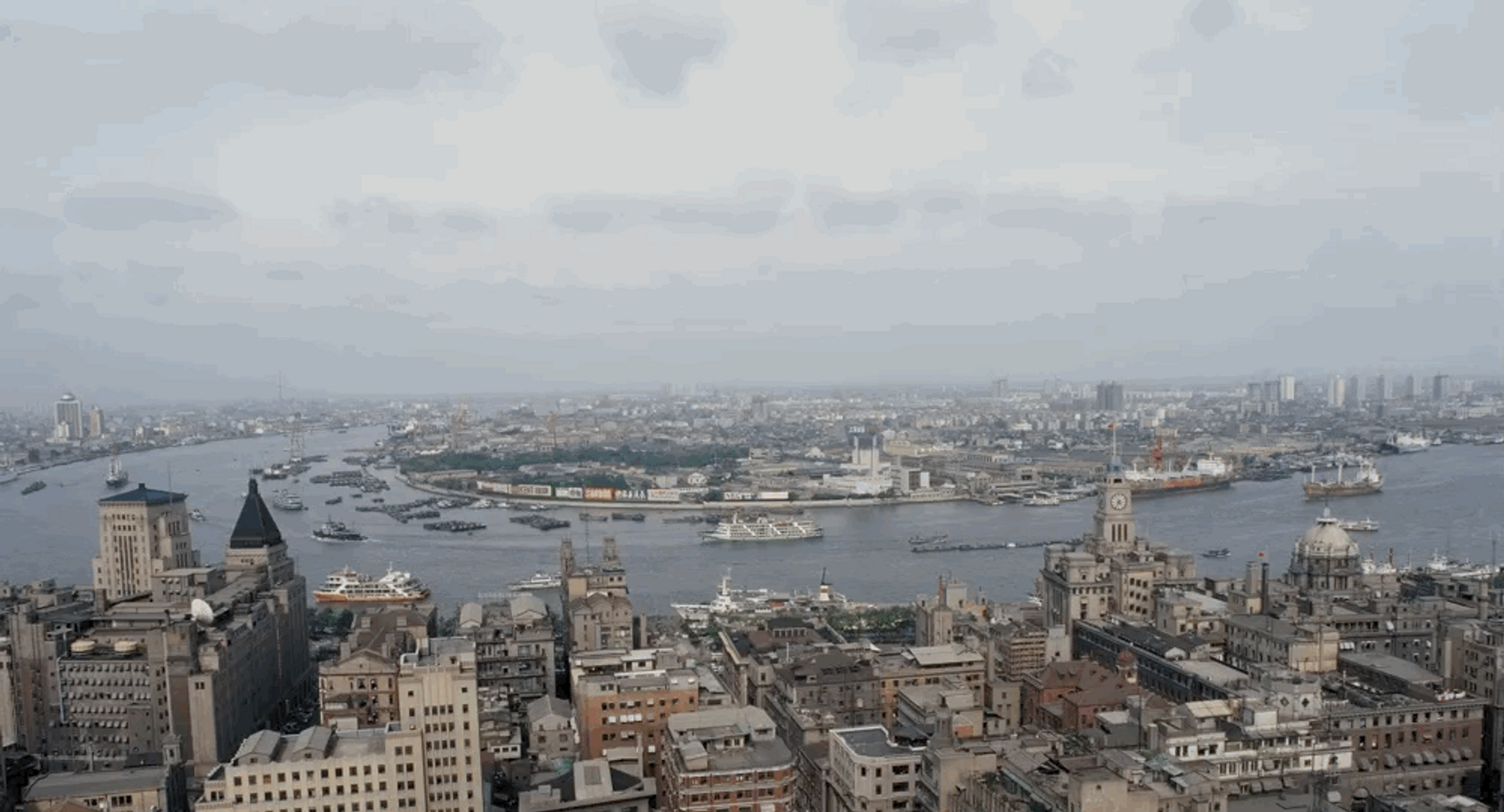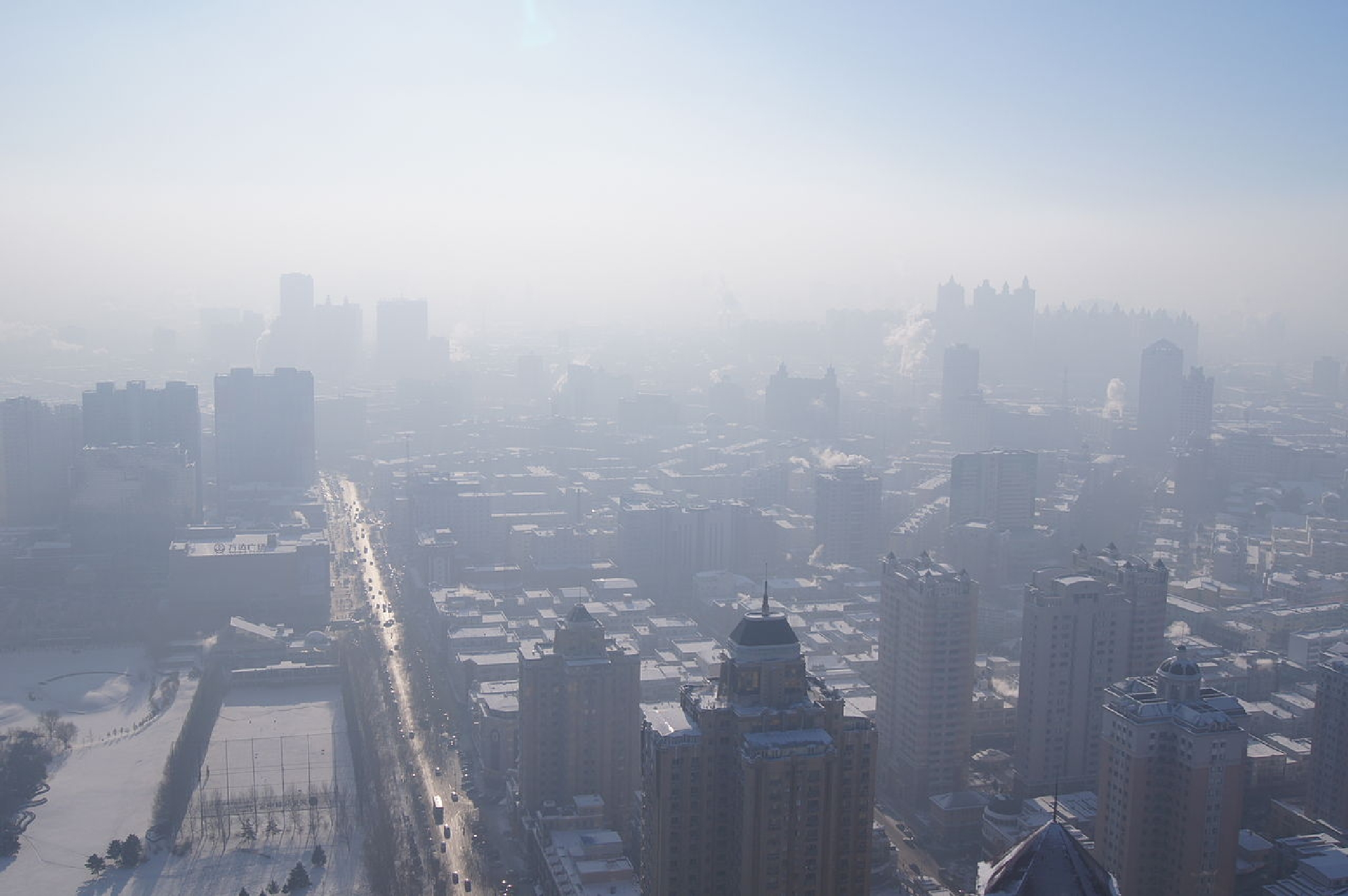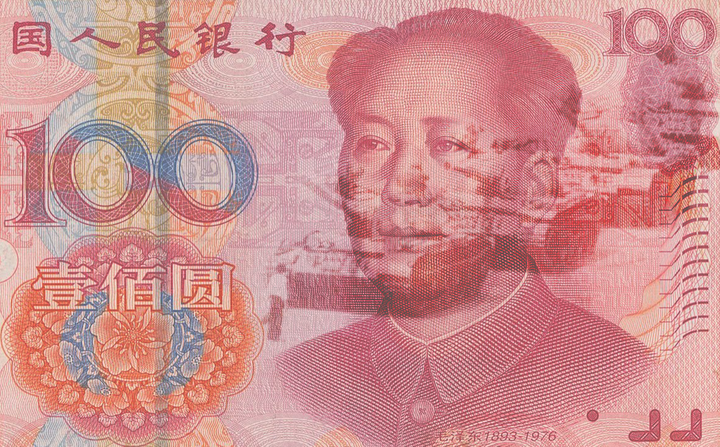Fall 2014
China's 1989 Choice: the Paradox of Seeking Wealth and Democracy
– Joseph O'Mahoney and Zheng Wang
In 1989, China's government made a choice to combine political repression, a market economy, and globalization.
This June, as the world remembered the 25th anniversary of the Tiananmen Square movement and crackdown, much of the attention was focused on personal memories of the event. But at least as important, if not more so, is the fact that this was a turning point for China.
Though Chinese leader Deng Xiaoping started opening up China to the world and reforming the economy in the late 1970s and early 1980s, the Chinese Communist Party (CCP) was cautious about the types (and pace) of change in both the political and economic spheres. The Party made progress in both, and tried hard to maintain a balance between the two, meting out economic reform with political reform.
Then came 1989.
The CCP faced a major crisis in legitimacy. Protests in Tiananmen Square were seen as a challenge to the CCP’s continued rule, and Party leaders were forced to make a choice about how to deal with the situation. Drawing on historical experiences, they concluded that without a politically stable society, China would be unable to effectively pursue economic development. (To this day, the Chinese government believes so strongly in this theory of stability that it recommends it to leaders of other developing countries.)
In 1989, the Party’s leaders decided to use all possible resources to maintain a stable society while aggressively implementing economic reforms. Over the next several years, they quickly embraced market capitalism, free trade, and globalization; stock markets opened in Shanghai and Shenzhen, banking reforms took hold, and the Party endorsed a “socialist market economy.”
At the same time, the Party rejected the old model that balanced economic reform with political reform. Any hopes of democratization were effectively halted. Compared with 25 years ago, today’s China has less freedom of speech. The state has applied tight controls, and the government’s budget for maintaining social stability is higher than the defense budget.
This was the ‘1989 Choice’: the combination of political repression with a market economy and embrace of globalization.
For better and for worse, China’s dramatic transformation over the last quarter century is due, fundamentally, to the 1989 Choice and decisions and policies that stem from it.
And what of this transformation? Data can tell us interesting stories about individual facets of China’s path since the Party made the 1989 Choice, but what about the overall narrative?
Is China’s tale over the last 25 years a success story?

The Post-1989 Economic Miracle
The Greatest Escape from Poverty in Human History
In 1989, China’s population was the largest in the world, but its gross domestic product (GDP), was only the world’s ninth largest. Twenty-five years later, China’s economy is the second largest in the world (after only the U.S., which it is projected to eclipse by 2019 at the latest) and, by all appearances, will continue expanding in the years to come.
This rate of growth is astonishingly rapid. Yearly growth rates of up to 10 percent over two decades have grown China’s economy to 24 times its size in 1989. The U.S. economy, by contrast — despite robust economic growth over the past 25 years — is slightly less than three times its 1989 size.
Such measurements are calculated using current U.S. dollars at market exchange rates, which means that they don’t take into account the fact that a dollar buys more goods and services in China than it does in the U.S. (which in some ways inflates the size of the U.S. economy relative to China’s). Comparisons of purchasing power are fraught with difficulties, but holding for purchasing power parity, the World Bank estimates that in 2012, China’s GDP was $14.8 trillion, while the U.S.’s was $16.2 trillion — proportionally, a much smaller difference than the GDP gap calculated by using market exchange rates. The gap between the Chinese and American economies has been getting smaller and smaller, although this is partly due to the renminbi appreciating against the dollar.
China’s economy is 24 times larger than it was in 1989.
The quality of the Chinese government’s economic statistics in general (and those used to calculate GDP in particular) has been a source of controversy, partly because there are internal political pressures to maintain the appearance of high growth rates. One recent report recalculated China’s GDP over the last few decades, and put the average yearly growth rate at 7.2 percent from 1978 to 2012; another study used satellite images of nighttime lights to estimate GDP growth, and found that China’s official numbers overstated the economy’s growth rate. By contrast, Chinese economist Li Yining claims that due to certain items being left out of GDP calculations (especially rural housing construction), China's current GDP growth is higher than the released figures. Regardless of these debates over the precise rate, it is unchallenged that China’s economy has grown exceptionally fast — especially since 1989.
Perhaps even more striking is the growth in China’s per person GDP, which is currently in the neighborhood of $6,000; in 1989, the same figure amounted to only about $300. This truly astonishing growth has outstripped all other countries with comparable starting points. In 1989, the per person GDPs of India and Kenya were $353 and $365, respectively; as of 2012, those figures stood at only $1,503 and $943. Egypt ended 1989 with a per person GDP twice as high as China’s; that ratio has now reversed, with Egypt’s per person GDP roughly half China’s size. Many countries have seen a rise in per capita GDP during this period, but there are almost none who started at the same level as China and have risen to comparable numbers today.
China’s per person GDP is more than $6,000. In 1989, it was just $307.
Still, though a massive improvement, this value of $6,000 only puts China in the World Bank’s “upper middle income country” bracket, along with countries like Peru ($6,800) and Iraq ($6,600). Compare this to a per person GDP of over $22,000 for South Korea, over $45,000 for Japan, and over $50,000 for the U.S., and it is clear that China still has much room for further growth.
Rocketing economic growth has led to a spectacular rise in living standards for the great mass of Chinese people. China’s percentage of people living on the equivalent of $2 a day (a common measure of poverty) has fallen from almost 85 percent to about 27 percent. The country’s ‘extreme poverty’ rate, defined as the rate of people living on $1.25 per day, has fallen from 60 percent in 1990 to less than 12 percent in 2009, according to the World Bank (more recently, a Gallup survey suggested that by 2012, the rate fell to only 7 percent). While this rate still falls short of the living standards of developed countries, China’s achievements have been widely hailed as part of the greatest escape from poverty in human history.
In order to appreciate the scale of this development, we need to put it into context. Back in 1990, China’s extreme poverty rate was comparable to that of Zambia, here used as a representative of the world’s poorest countries. After the 1989 Choice, with radical economic reforms enacted, China’s extreme poverty rate started to drop. Ten years later, it was equal to India’s; ten more years after that, it was only one-third that of India. India has reduced its extreme poverty rate from 50 percent to roughly 30 percent since 1990, which is no mean feat, especially given the size of India’s population. However, during the same period, the proportion of Chinese people in extreme poverty plummeted to one-tenth its initial size. China is now in the neighborhood of countries like South Africa, and looks set to reduce its rate even further.
Higher up on the income scale, China’s middle class is growing rapidly and accessing more and better consumer goods. One illustrative example is passenger car ownership. Over the last 10 years, the number of cars purchased per month has grown sixfold, increasing from about 250,000 to over 1.5 million cars sold every month. In 2013, Chinese people bought more than 20 million cars — 400 times as many as were purchased in the entirety of 1990, when fewer than 50,000 passenger cars were bought.
Though the growth in consumer goods is striking, China’s newly wealthy aren’t just spending their money on cars and other gadgets; they’re trying to secure upward-mobility for their families by capitalizing on opportunities that were previously out of reach — especially the chance to send their children to college in America. The number of Chinese students (on F or M visas) studying in the U.S. has increased substantially in the last few years. In 2013, almost one-third of all international students in the U.S. were from China.
At the top of the wealth pyramid, the number of Chinese people with more than $1 million in disposable assets (high net worth individuals) has increased 60 percent over the last five years. In 2013, there were 758,000 Chinese millionaires, the fourth largest amount in the world, according to a study by Capgemini Financial Services Analysis and the Royal Bank of Canada.

Development with Costs
Economic reform and globalization have brought China unprecedented wealth and power. These have come at a cost. The environment has paid a sometimes ruinous price for the rise in living standards. China’s carbon dioxide emissions have rocketed upwards and show no sign of stopping — a contrast to the European Union, where overall emissions have either held steady or marginally decreased, despite economic gains over the past 25 years. Even the U.S. has seen a plateauing in its emissions levels against a backdrop of substantial increases in economic activity. (Differing population sizes, of course, mean that China’s per capita emissions are not as high as its Western counterparts — the average Chinese person is currently responsible for roughly the same amount of annual CO2 emissions as the average European, and only about half as much as the average American.)
The growth in the sheer amount of economic activity — including driving all of those new cars — can explain some of the rise in pollution, but the nature of the energy used is also to blame. China leads the world in its consumption of coal, and new power plants are opening up every year. Indeed, the total amount of coal consumed in China is now almost as much as the amount consumed by the rest of the world combined. If the Chinese economy is to continue growing, more and more energy will be needed, and coal seems likely to continue as the fuel of choice.
The environmental impacts of China’s economic growth aren’t limited to problems of a global scope, like climate change; Chinese people suffer directly — and tangibly — from decreasing water quality, deforestation, desertification, and (perhaps most notoriously) air pollution.
In Beijing, the U.S. Embassy routinely collects air quality data, measuring the level of particulate matter in the air that is less than 2.5 micrometers in diameter — particles of dust, dirt, soot, smoke, and liquid droplets are all included in this measure. Because they can be inhaled and lodge deeply in the lungs, these small particles pose major health risks, according to the Environmental Protection Agency (EPA).
The maximum level for a ‘non-harmful’ air quality rating is 12 micrograms per cubic meter. Over the last six years, the readings taken by the Embassy in Beijing were usually between 55.5 and 150.4 micrograms per cubic meter, a range that the EPA classifies as “unhealthy.” On January 12, 2013, the air quality reading in Beijing was a monstrous 568.6 micrograms — higher than even the uppermost bracket for the EPA’s worst air category, “Hazardous.” Based on an official report from Beijing’s municipal government, 2013 saw 58 days when the city’s air quality reading was above 200 micrograms per cubic meter.

China’s Widening Inequality
The 1989 Choice has also taken its toll on Chinese society. The decision to pursue economic growth at the expense of political reform has led to several trends that realize some of the worst fears of those who advocated moderate reform before 1989. The jettisoning of the iron rice bowl and the dismantling of the social safety net — in addition to rising wealth from market activity — has led to a drastic widening of the gap between rich and poor.
The Gini Coefficient is a statistic that summarizes the complex phenomenon of income inequality in a single number — an assessment that reveals the degree to which China has abandoned the economic equality of old. Measuring the average difference between people’s incomes, the Gini can go from 0 (where everyone has the same income) to 1.00 (the equivalent of 100 percent, where one person has all the income).
Here, we plotted the most recent Gini coefficient for every country and ordered them from most equal to most unequal. Then, for comparison, we added China’s value from roughly 25 years ago. In 1987, China’s Gini score was about .3 — among the most equal countries in the world, though widely impoverished. By 2009, the same inequality measure had climbed above .42. Based on this number, China’s income distribution is more unequal than 63 percent of the countries with values collected by the World Bank. Instead of being in the realm of Denmark, Sweden, and Norway, China now has levels of inequality comparable to Angola, Venezuela, and Congo. After years without any official governmental reports on China’s Gini index, an independent report by a Chinese university in 2012 revealed China’s score soared to a worrying new high: .61. This would make China the fifth most unequal country in the world.
Another way to measure inequality is in terms of the share of total income going to different sectors of society. Since 1990, the percentage of national income going to the poorest 10 percent of China has dropped by half — and the same is true for the lowest 20 percent.
Increasing inequality, while consistent with rising absolute levels of living standards, poses a potentially serious threat to the coveted social stability the CCP is obsessed with maintaining — which is likely why the Party has introduced new anti-poverty programs (like the Minimum Living Standard Scheme, which aims to guarantee a minimum income to registered urban residents by making up the gap between their income and the poverty line).
Understanding the 1989 Choice
So, what is China’s story since Tiananmen?
The CCP’s narrative, which is believed by many people inside China, is that stability brought prosperity. Many people say that yes, the party made a lot of mistakes, but if any political change happens, stability will be lost, and China will immediately face a major crisis. This line of thinking holds that even though it’s troubling that the government has exerted tighter control over speech, the press, and the internet, China has suffered no major political change or turmoil — allowing the country to instead focus on economic development. Thailand and Ukraine are used as cautionary examples of the reality an unstable China would face. Democracy means suffering from political instability, which impedes economic development.
“Democracy means suffering from political instability, which impedes economic development.”
Qin Hui, a professor at Tsinghua University in Beijing, has offered an alternative narrative to explain China’s ‘economic miracle.’ He sees the so-called “China model” as defined by “low welfare and lack of freedom paired with economic globalization.” Qin argues that China’s lack of democracy gives it a “low human rights advantage”: sweatshops and little-to-no welfare have made “made in China” irresistible in the globalized markets. He also suggests that China’s model will be difficult for other developing countries to replicate, especially those with democratic systems.
Given China’s rise in wealth and power, and its unprecedented reductions in poverty, it seems unlikely that anyone could wholeheartedly say that the 1989 Choice has produced a failure. Likewise, given the many problems resulting from this marriage of political repression and a globalized market economy, it seems equally unlikely that anyone could say the 1989 Choice produced an unqualified success.
Looking forward, even if China has, in some ways, profited from its embrace of globalization, how long will such a profit last? Is the current breakneck trajectory sustainable or not? It seems likely that there are unappreciated dangers lurking in China’s future. Has the 1989 Choice sacrificed long-term gains for short-term benefits?
In what is perhaps a parable for modern China, in 2012, a young boy from Anhui province reportedly sold one of his kidneys to raise the money to buy an iPad. Subsequently, he suffered renal deficiency.
China’s rise is one of the most significant and challenging issues in today’s international system — raising questions about peace, security, development, and prosperity in the 21st century. Answers to these questions depend on a full understanding of the 1989 Choice and its impact on China and the world.
The debates will no doubt continue.
* * *
Zheng Wang is the Director of the Center for Peace and Conflict Studies and an Associate Professor in the School of Diplomacy and International Relations at Seton Hall University, and a Global Fellow at the Wilson Center.
Joseph O'Mahoney is an Assistant Professor in the School of Diplomacy and International Relations at Seton Hall University.
Cover illustration by Zach Stanton Interactive charts created using Datawrapper.
